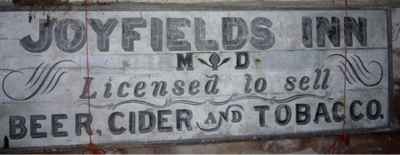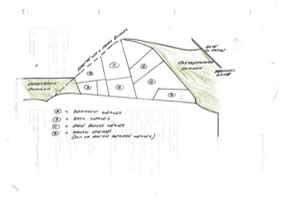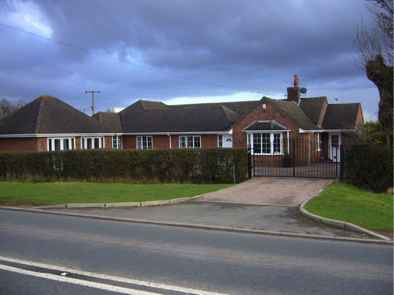THE BCH ARCHIVE
LOCAL HISTORY FOR
BIRTSMORTON
CASTLEMORTON
HOLLYBUSH
And The Surrounding District
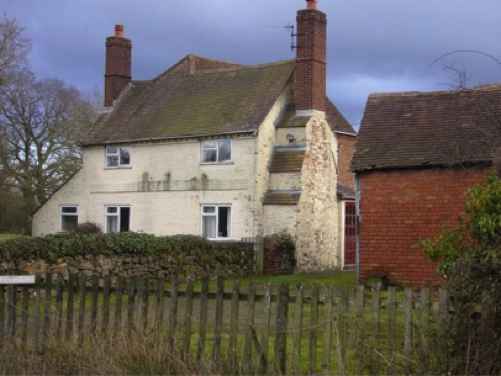
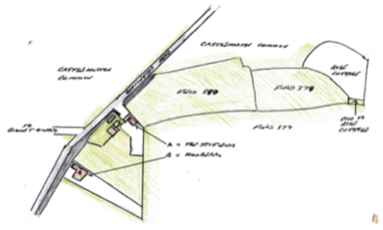
Public Houses
This covers The Joyfields with notes about Hillberry next door.
The Joyfield
The Joyfields, 2017
Hillberry, 2017
The Joyfields
The Joyfields was built in 1694 and is listed on buildingstones.org:
Building Type: Dwelling house
General Description: From Historic Buildings of Worcestershire Project photograph:
Brick outbuilding with small section of rough Malvern Stone walling.
Main Building Material: Brick
Building Stone: From photograph there is a section of rough Malvern Stone wall incorporated into the more recent brick wall of a farm outbuilding.
In 1793, it is mentioned in the Will of Thomas Knight of Castlemorton, Clerk (Cleric),as one of his properties.
In 1827, fields 380 and 378 were both called Hopes Path, so at one time they would have been one field. The oak trees in the dividing hedge are over 200 years old. 380 was arable and 378 was orchard. The land south of The Joyfields and belonging to it was also orchard.
In 1830, it was occupied by Mr Clarke who was selling The Kings Head at Ledbury.
In 1832 it was put up for auction on Hay on Wye.
In 1832, 6 October, Mr Josiah Matthews was a tenant.
In 1833, it sold by auction on 15 August at The Plume of Feathers:
Lot 1. A most desirable freehold property called Joyfields, situate in the Parish of Castlemorton, consisting of a substantial brick built dwelling house, having a kitchen, 2 parlours, back-kitchen, cellar and 4 bedrooms; together with good stable, cider mill-house, piggery, and other convenient buildings, all in good repair; two productive gardens and a rich pasture orchard, planted with the choicest sorts of fruit trees (now in full bearing), containing about 2 acres.
This property possesses many advantages rarely to be met with, being close upon a good road, 2 miles from Malvern Wells, 4 from Great Malvern, 4 from Upton-upon –Severn and 12 from Worcester; adjoins Castlemorton Common which forms part of Malvern Chase, over which it has an unlimited Right of Common. The scenery surrounding is most picturesque and the views delightful, the Wells and Great Malvern forming the most prominent features. Any gentleman wanting a Sporting Residence would find this a desirable spot, as the premises might, at a reasonable expense, be converted into any conveniences required for that purpose. Fox hounds and harriers are kept in the neighbourhood and the country abounds with game.
Francis Mear, who has lived at The Joyfields since 1980, has not found the cellar.
In 1839, the Tithe Map calls it Joy’s Field. Belonging to Samuel Higgins, it is rented to William Wadley.
In 1841, William Wadley was living there with his wife Elizabeth and daughter Mary. His occupation is Shoemaker.. Also living there is Sarah Hancox and the Walters family – Peter and his wife Mary and their children Stephen, Henry and Elizabeth.
In 1851, it was occupied by William Wadley (Dealer), his wife Elizabeth and their children John, Elizabeth, Ann, William and Thomas.
In 1855, it was again auctioned (1 August)
Memories from Francis Mear
I was born in 1930. I went to school in at Welland and when I was walking home one day in about 1940 I saw a Tiger Moth fly over Fairfield and land on the Common near Hancock’s Lane by the Gloucester Road. After that they put poles all over the common to stop the Germans landing.
About 20 yards to the north of the turning down to Eight Oaks from the Gullet Road, there was a searchlight and two nissen huts and a generator on the common and an outline is still visible today. (can be seen on Google Earth)
I learnt to drive in an Austin 5 tonner in the field to on Feather’s Pitch, between Feathers Pitch Cottage and Morton House.
I am Vice President of the National Vintage Tractor and Engine Club and have three vintage tractors:
Ferguson T20 which my father bought second hand in 1947, 2 years old, It had been owned by Major Griffiths and was sold through Roberts Garage in Welland. These was a mower and other implements to go with it.
Ferguson 1954, diesel, painted grey. It was used mainly for competition ploughing matches in Worcestershire and Herefordshire.
Ferguson FE35, petrol, painted red and grey. I bought this completely renovated and this is one I take to Shows.
During the war, the field behind The Joyfields was drained by Italian prisoners of war digging trenches. They arrived in the morning in an Austin 7 tonnes and left in the evening. They were supervised by Reuben Rogers.
After the war, cereal crops and potatoes were grown on the Common on the land East of Gloucester Road up to Baker’s Farm. This was organised by Worcester Agricultural Society (Arthur Colson, Vin Merrick, Ernie Rouse, Ivor Minton) The Common was fenced off on the West side with barbed wire, with gates for Rose Cottage, Bakers Farm and Hurst Farm.
The Common was used as a shooting range for practice, with slit trenches dug and Free French and Belgian troops taking part. A red flag was raised and sentries stood on guard. The only trees you could see were two clumps of black poplars, one towards Welland and one by Strawbyn. The rest of the Common was clear.
There was a sheep dip on the common just by Hancock’s Gate. Mrs Strawford lived in the gatehouse and was the Castlemorton schoolteacher.
Along Hancock’s Lane were Frank Hill who married Joyce Yapp from Gloucester. A Mr Jones from Wales who kept sheep on the Common and then Edward Haynes (Ned) who kept halves of sheep with Ernie or Harold Webb. (Halves is where you look after another person’s sheep in return for the wool or the lambs) Jones was always on the Common with his dog and would set fire to any gorse bush that got too big – this was stopped during the war.
When The Rave was on we were little troubled. Our hedge was wider then and a policeman in camouflage would hide in it to observe the goings on. Our field and barn were used occasionally as a toilet and packs of dogs were running about.
Lot 3 – A most desirable freehold property called Joyfields situate in the Parish of Castlemorton being a substantial brick built dwelling house, comprising a kitchen, two parlours, back kitchen, cellar and four bedrooms; together with a good stable, cider millhouse, piggery, and other convenient outbuildings, all in good repair; two productive gardens with choice fruit trees, containing about two acres. This Lot is in the occupation of Mr William Wadley, is close upon a good road, and adjoins Castlemorton Common.
In 1861, it was occupied by John Hiron (Threshing Machine Man), his wife Elizabeth and their children George, Louisa, Charles and Elizabeth.
It is un-named in the 1871 Census, but as the property next to the Feathers heading towards Welland it is easily identified and was occupied by Thomas White (Hardware Dealer – Hawker), his wife Elizabeth and William Wagstaff (Lodger).
In 1875, Mr. J Bentley, of Worcester, defended James Jones, of Castlemorton, Butcher, charged Hy. Bullock, of the same place, fowl dealer, with assaulting him at Castlemorton, on the 15th inst. Mr. Bentley appeared for Jones. It appeared from the evidence that Bullock and his wife had been at the Joyfields Inn, Castlemorton, all the afternoon and evening, and Bullock was considerably the wor6e for beer, and struck his wife, and quarrelled with everybody present, including complainant, who, however, gave him and his wife a lift in his cart part of the way home. After going a short distance Bullock again became violent, and struck his wife, upon which Jones ejected him from the cart, and Bullock then committed the alleged assault. Fined 2s. 6d. and costs. Henry Bullock also summoned Jones, and a companion named Drinkwater, for assaulting him at the same time and place, but there was no evidence to corroborate the complainant's and the case was dismissed.
25 May 1875, Worcester Journal
In 1878, Mr Hiron was running the Joyfeld Inn.
In 1881, it is listed as Joyfields Inn, occupied by John Hirons (Farmer and Inn Keeper), and his wife Elizabeth. Also living there is George Heath (Shoemaker) with his wife Martha and children Mary, Anne and Florence.
The 1887 Ordnance Survey map shows the land belonging to the property (ie to the south as far as the Plume of Feathers), as orchard. So too does the 1927 Ordnance Survey map.
In 1888, Walter Pitt and John Harford Pitt, non-residential owners, sold The Joyfields to John Hiron.
In 1891, it is still Joyfields Inn, occupied by James Blackman (Innkeeper) and his wife Eliza, mother in law Jane Williams and nephew Joseph Page.
In 1891, 24 October, the licence passed to Robert Short.
It was a pub with a licence for beer, cider and tobacco and made its own cider from fruit trees in the orchard behind the pub, extending back to Rose Cottage. Outside was a horse powered cider crushing round trough and wheel, sold by Francis Meer to a man in Inkberrow. There was also The Plume of Feathers, The Robin Hood, The Plough and Lodge Inn on Golden Valley (where a bounced was needed to control the American Servicemen)
In 1900, it was Joyfields Inn run by Robert Short.
In 1901, it is run by Robert Short (Army Pensioner ) and his wife Eliza.
By 1909, James Smith of Rodborough in Gloucestershire, a substantial property owner, took out a mortgage with Arnold Perret & Co of Gloucester, Brewers, giving The Joyfields and other properties as security.
In 1911, as Joyfields Inn, it is occupied by Eliza Short, aged 59, widow and Inn Keeper.
In 1919, James Smith and others sold the Joyfields to Henry Richard William Weaver of The Feathers Inn (Plume of Feathers a short distance further down the road).
In 1921, Henry Weaver sold it to Edward William Storey of 236 Ombersley Road, Worcester, a retired police constable. Previous occupants were listed as Frank Mear and his mother Frances Latham Mear, Charles Evans and John Hiron(s).
In 1922, Storey sold it to William Davies who also ran The Robin Hood in Kidderminster (not to be confused with the pub of same name in Castlemorton).
In 1928, Davies sold the property to Charles Ernest Sutcliffe of Barrel Brewery, Hereford, who de-licenced it. Francis Mear’s parents, Frank and Elsie, bought it the same year. Frank had a milking cow and a smallholding.
Dora Grainger, born at Penbode in 1935, recalls playing with the gravel heaps on the common outside The Joyfields, put there to be used against skidding on ice or becoming bogged down. The tar on the road used to blister when it was very hot.
When his parents died within 3 months of each other in 1978, Francis Mear spent 2 years renovating the property in his spare time. He took occupation in 1980.
In 2001, he sold the land behind Hillberry to his nephew Martin Brookes and his wife Deborah.
In 2007, Francis sold a small piece of land at end of field 378 to Mrs Brown who owned Rose Cottage, to improve her view of the hills. The Joyfields and its remaining land was registered with the Land Registry at this time, WR108765.
The house has a 65ft well with an electric pump and today is still not on mains water. The electric pump is activated by a ball valve in the water storage tank in the loft has now done 30 years of service.
Hillberry was built in the mid 1950’s on land donated by Francis’s parents to his sister Gillian’s (1932-2016). She married Malcolm Leslie Brookes in 1953. Malcolm and Gillian (1932-2016) built much of it themselves in their spare time. In 1993, Gillian and her husband Malcolm Brookes moved to Welland and Gillian’s daughter and her husband Martin Brookes moved in. They actually swapped houses.
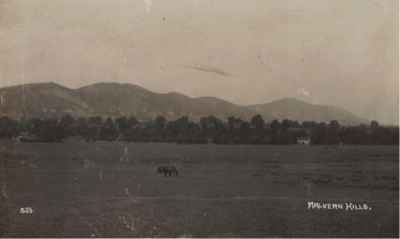
Going back a generation to my great grandfather William Dowding Weaver, he was one of three children. His brothers were James Weaver (1879-1962) and Robert Weaver (1885-1961)
James married Maria Verioni (1873-1924) in 1909 and they had no children. They owned Kings Farm and other properties and land, see Appendix A.
Robert married Florence E Vale (1886-1961) in 1913 and they had one son, Robert Thomas S Weaver (1915-1999) who married Mary Elizabeth I Langley (Renee) (1918-2000) in 1941.
Robert and Mary had two children: Christine M Weaver (1943-) who married Peter F Kingston in 1962 and Colin R Weaver (1948-) who married Ann C Hathaway in 1973. Colin and Ann live at Kingswear on the road to the Gullet with their son Mathew Robert (1976-) where he repairs TV’s and DVD players and installs aerials.
My Family
My grandparents, John Thomas Mear (1863-1941) and Frances Latham Foxley (1872-1962) farmed Upper Ridding Farm near Broseley from at least 1901-1911. Even though they had 10 children, for some reason I do not know, my grandmother came to Castlemorton with two of her sons, Frank (my father, 1898-1978) and Richard (1909-1991, to run the Joyfields Inn.
Eventually she went back to her husband at Broseley, with Richard. Frank stayed on, living at Boulters Farm.
My mother’s parents, William Dowding Weaver (1873-1918) and Annie Bertha Fanny Jakeman (1875-1949) bought Boulters Farm in 1901. William had a horse called Short. William built the first bridge you cross coming from Gloucester Road to Hancocks Lane. It bridges a stream. When he was digging the foundation he found a rhino’s tooth, which is supposed to be in Worcester City Museum. I saw it there in the 1950’s or 1960’s and after that it was sent for cleaning. They now have no record of it.
Fanny ran the farm until the 1930’s, with her youngest son, Basil Dowding Weaver (1907-1997) eventually took over the farm. In the 1940’s, Annie Bertha Fanny left to live at The Joyfields. The farm was sold in about 1992 to the Freemans and he moved into a bungalow in Poolbrook.
In 1925, Frank married Elsie Gladys Weaver (1900-1978), daughter of William Dowding and Annie Bertha Fanny. They had two children: myself (Francis W J Mear, 1930- and Gillian L G Mear, 1932-2016).
Frank ran a smallholding at The Joyfields and kept sheep and cattle on the Common. You can still see from the furrows that the field nearest The Joyfields was ploughed. He worked for William Trower Acock as a gardener at his nursery in Welland.
I was born in Castlemorton and after leaving Hanley Castle Grammar School I was indentured as a car mechanic with Bowman and Acock in Malvern link – “The Motor Engineers of Malvern”. Brooklyns eventually took them over, then they closed and the land was redeveloped for sheltered housing.
My apprenticeship was completed 2 September 1951 and on 6th September I joined the REME in Blandford for 2 years National Service, ending up as Substantive Corporal at Ashchurch as a vehicle mechanic. This was followed by 14 years in the TA with 267th Worcester Field Regiment based at Clarence Road, Malvern. I stayed on as a National Service Volunteer part time until the Regiment was disbanded in 1968, when I was Warrant Officer in the REME L.A.D. Section.
I married in 1952 to Pamela M E Lane and we had two sons, Bryan (b. 1956, now deceased) and Patrick (b. 1961).
I had been living in Winnington Gardens, Hanley Swan and returned to The Joyfields in 1980 after my parents died.
My father kept cattle and eventually purchased a 2 cow milking machine and sold milk to Tilts who had a creamery as Hanley Swan – 2 churns a day. I would buy in bull calves from Little Malvern Farms through Steve Pritchard, keeping 6-8 at a time. I used to make hay, as well as buying some in, for cattle food. I sold the calves at 12 months old, Ron Bunn taking them to Gloucester market for me. I built the tin barn/cattle shed by my house to keep the cattle in.
Today, Roger Jakeman, grandson of my grandmother’s brother George Hill Jakeman (1879-1918) rents my fields to keep his bullocks, cows and calves.
My mother, Elsie Gladys Weaver, was one of four children:
William George Weaver (1898-1958)
Herself
Bertha Eugenie Weaver (1902-1990
Basil Dowding Weaver (1907-1997)
William George married Hilda Pinchin (nee Reece) (1898-1971) in 1924. He worked as blastman at The Gullet Quarry. They lived at The Mount, New Road and had five children:
William Henry Weaver (1925-2004) who married Eileen Evelyn Brimmell (1929-1977) in 1951 and their son is Dermott W A Weaver (1959-) who lives at Orchard Lodge on Plough Road.
Caroline B Weaver (1927-1979) who married Alan H Hardy in 1953.
Richard D Weaver (1928-1928)
Margaret J Weaver (1930-) who married John F C Oliver in 1955.
Rosalie J Weaver (1938-) who married Frederick J Miller in 1963. Their two sons, William and Richard, own Malvern Tyres and she lives at The Mount in New Road.
Bertha Eugenie Weaver married Richard John Spencer in 1923. They had a daughter Barbara Eugenie and a son Richard William.
Basil Dowding Weaver married Cecilia M Smith (1908-1991) in 1930 and they had two children: Jean C E Weaver (1934-) who married Eric W Young in 1956 and she now lives at Welland Gardens (His father owned a Bakery in New Road and delivered all over the Common by horse and cart) and William Basil Dowding Weaver (b. 1931). Basil married in 1949 to Joan Coldicott and they had two daughters: Ann J (1950-) who married Keith G Knight in 1971 and Pamela B (1953-) who married Cni W Yau in 1972; and a son Richard who died in 2017. Basil lived at 14 Marlbank.
My grandfather, William Dowding Weaver, and my mother bought some of the fields east of Shadybank Common when they ceased to be allotments prior to 1918 I am not certain, but believe this map is correct. Jack and Brian Clutterbuck bought some of Basil’s fields later.
Elsie Gladys herself married Frank Mear in 1925 and had two children: Francis William John (1930-) and Gillian Lyta Gladys (1932-2016)
Castlemorton Common from the Joyfields
